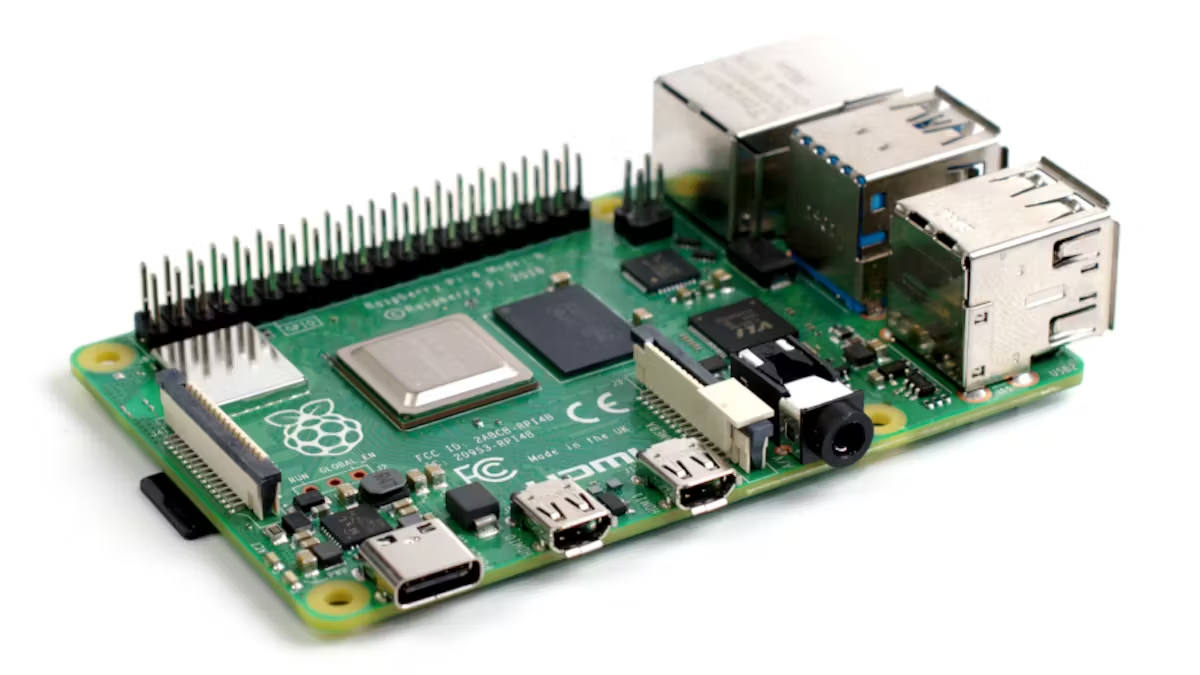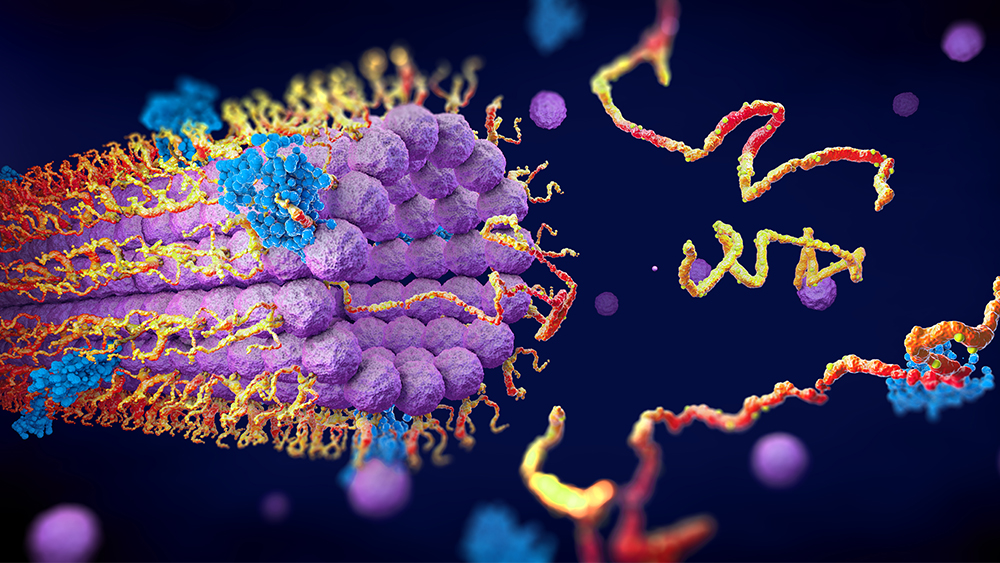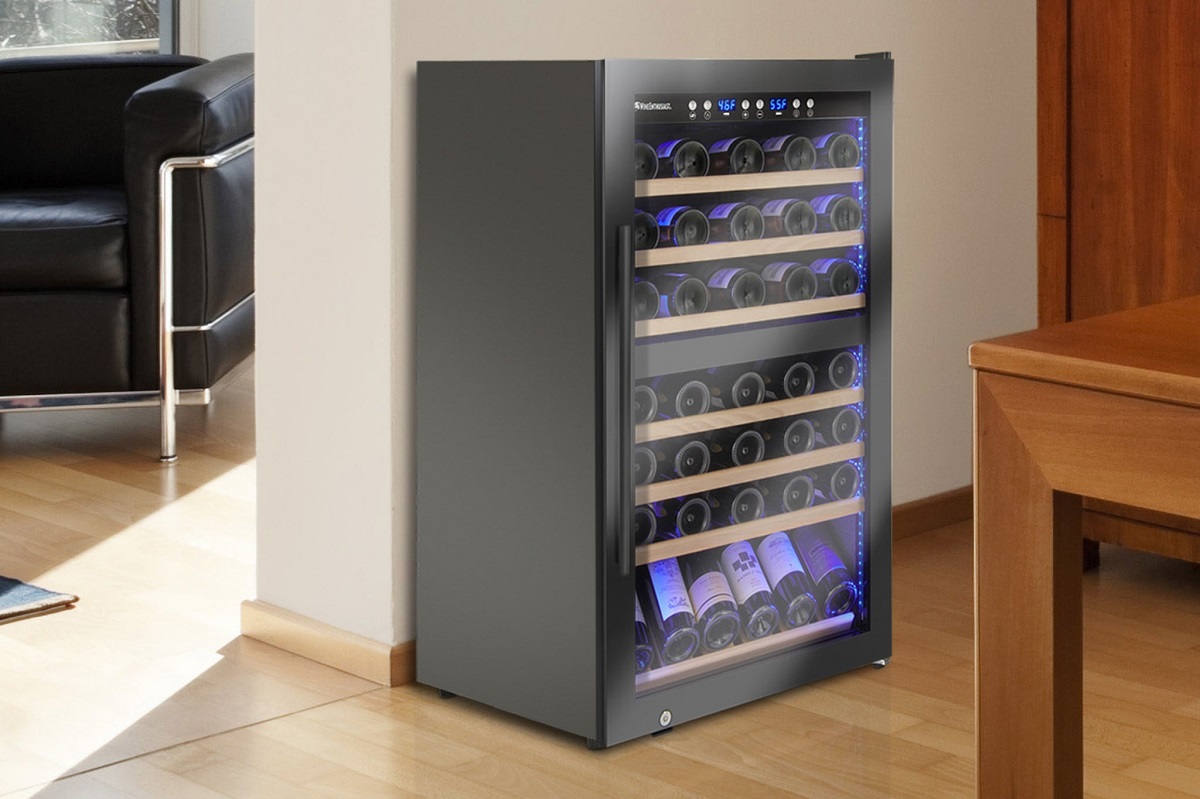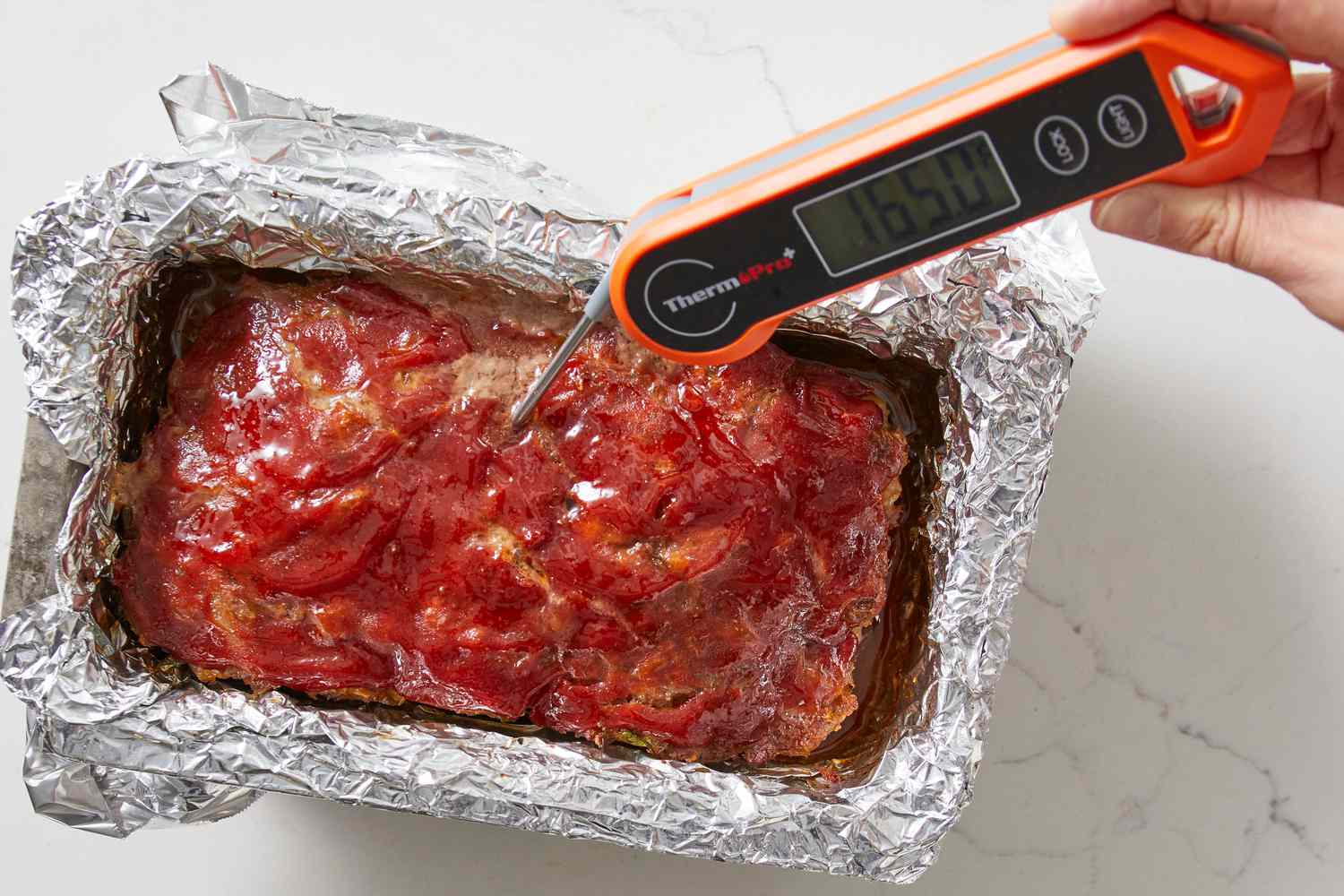Home>Technology & Engineering>Optimizing Raspberry Pi Temperature For Improved Performance


Technology & Engineering
Optimizing Raspberry Pi Temperature For Improved Performance
Modified: April 28, 2024
Optimize your Raspberry Pi temperature for improved performance with our expert technology and engineering tips. Keep your device running at its best with our proven strategies.
(Many of the links in this article redirect to a specific reviewed product. Your purchase of these products through affiliate links helps to generate commission for Temperatures.com, at no extra cost. Learn more)
Table of Contents
Understanding Raspberry Pi Temperature
The Raspberry Pi, a versatile and affordable single-board computer, is renowned for its myriad applications, from DIY projects to industrial automation. However, one crucial aspect that significantly impacts its performance and longevity is temperature management. Understanding the dynamics of Raspberry Pi temperature is essential for optimizing its functionality and preventing potential issues.
Raspberry Pi temperature refers to the degree of heat generated by the device during operation. As with any electronic component, the Raspberry Pi produces heat as a byproduct of its energy consumption. This heat can accumulate within the device, potentially leading to thermal throttling, decreased performance, or even hardware damage if not managed effectively.
The temperature of a Raspberry Pi is influenced by various factors, including the workload it handles, environmental conditions, and the efficiency of its cooling system. When the workload intensifies, such as during resource-intensive tasks like gaming or 3D rendering, the CPU and GPU generate more heat, causing the temperature to rise. Additionally, the ambient temperature of the surroundings can impact the Raspberry Pi's thermal performance. Operating the device in a hot environment can exacerbate heat buildup, potentially compromising its stability and reliability.
Understanding the nuances of Raspberry Pi temperature is crucial for devising effective strategies to optimize its performance and mitigate potential risks. By comprehending the interplay between workload, environmental conditions, and cooling mechanisms, users can proactively address temperature-related challenges and ensure the seamless operation of their Raspberry Pi devices.
In the subsequent sections, we will delve into the factors affecting Raspberry Pi temperature, the importance of temperature optimization, methods for improving thermal performance, and the significance of monitoring temperature levels to maintain the Raspberry Pi's optimal functionality.
Factors Affecting Raspberry Pi Temperature
The temperature of a Raspberry Pi is influenced by a multitude of factors, each playing a pivotal role in determining its thermal performance and overall functionality. Understanding these factors is essential for devising effective strategies to manage and optimize the device's temperature. Here are the key elements that significantly impact Raspberry Pi temperature:
Workload Intensity
The workload imposed on the Raspberry Pi directly correlates with the heat it generates. When the device is tasked with computationally intensive operations such as video streaming, gaming, or complex data processing, the CPU and GPU work at heightened levels, leading to increased heat production. Consequently, the temperature of the Raspberry Pi rises in tandem with the intensity of the workload, potentially affecting its performance and stability.
Ambient Temperature
The environmental conditions in which the Raspberry Pi operates play a crucial role in its thermal dynamics. High ambient temperatures can impede the dissipation of heat from the device, exacerbating thermal buildup. Operating the Raspberry Pi in a confined space or a poorly ventilated environment can further elevate its temperature, potentially compromising its operational efficiency and longevity.
Cooling Mechanisms
The effectiveness of the cooling mechanisms employed to dissipate heat from the Raspberry Pi significantly influences its temperature. Passive cooling methods, such as heat sinks and thermal pads, facilitate the transfer of heat away from critical components. Active cooling solutions, including fans and liquid cooling systems, enhance heat dissipation by actively circulating air or coolant to mitigate temperature spikes. The quality and efficiency of these cooling mechanisms directly impact the Raspberry Pi's thermal performance.
Overclocking
Overclocking, a practice of running the Raspberry Pi's CPU or GPU at a higher clock speed than the manufacturer's specifications, can substantially elevate its temperature. While overclocking can enhance performance, it also intensifies heat generation, necessitating robust cooling solutions to maintain thermal equilibrium and prevent potential thermal throttling or hardware damage.
Enclosure Design
The design and material composition of the Raspberry Pi's enclosure can influence its thermal characteristics. Enclosures with inadequate ventilation or insulating materials can impede heat dissipation, leading to elevated temperatures. Conversely, well-ventilated enclosures with heat-dissipating materials can facilitate efficient thermal management, contributing to the device's overall temperature regulation.
Understanding these factors is crucial for implementing effective temperature optimization strategies and ensuring the sustained performance and reliability of the Raspberry Pi. By addressing these elements, users can proactively mitigate temperature-related challenges and enhance the thermal efficiency of their Raspberry Pi devices.
Importance of Optimizing Raspberry Pi Temperature
Optimizing the temperature of a Raspberry Pi is of paramount importance for ensuring its sustained performance, longevity, and reliability. The significance of temperature optimization transcends mere thermal management, encompassing a myriad of pivotal aspects that directly impact the device's functionality and user experience.
Enhanced Performance and Stability
Effective temperature optimization directly contributes to the enhanced performance and stability of the Raspberry Pi. By maintaining the device within optimal temperature ranges, users can mitigate the risk of thermal throttling, a phenomenon wherein the CPU or GPU reduces its clock speed to prevent overheating. This proactive approach ensures that the Raspberry Pi operates at peak performance levels, facilitating seamless multitasking, efficient data processing, and responsive user interactions.
Prolonged Hardware Longevity
Optimizing the temperature of the Raspberry Pi is instrumental in preserving the longevity of its hardware components. Excessive heat can accelerate the degradation of critical elements, such as the CPU, GPU, and memory modules, potentially leading to premature component failure. By implementing effective temperature management strategies, users can mitigate the detrimental effects of heat-induced wear and tear, thereby extending the operational lifespan of their Raspberry Pi devices.
Prevention of Thermal-Related Issues
Inadequate temperature regulation can give rise to a myriad of thermal-related issues, ranging from performance degradation to hardware malfunctions. Overheating can compromise the stability of the Raspberry Pi, leading to system crashes, data corruption, and potential hardware damage. By optimizing the device's temperature, users can preemptively avert these issues, ensuring uninterrupted operation and safeguarding the integrity of their data and applications.
Energy Efficiency
Temperature optimization plays a pivotal role in enhancing the energy efficiency of the Raspberry Pi. By maintaining the device within optimal temperature thresholds, users can minimize the energy consumption associated with cooling mechanisms, such as fans or heat sinks. This not only reduces operational costs but also aligns with sustainable computing practices, contributing to a more eco-friendly and cost-effective utilization of the Raspberry Pi.
Overall User Experience
The optimization of Raspberry Pi temperature significantly contributes to the overall user experience. By ensuring consistent performance, prolonged hardware longevity, and reliable operation, users can leverage the full potential of the device across diverse applications, ranging from home automation and media centers to educational projects and industrial automation.
In essence, the importance of optimizing Raspberry Pi temperature extends beyond mere thermal management, encompassing a holistic approach to enhancing performance, preserving hardware integrity, mitigating potential issues, promoting energy efficiency, and elevating the overall user experience. By prioritizing temperature optimization, users can unlock the full potential of their Raspberry Pi devices while ensuring sustained functionality and reliability.
Methods for Improving Raspberry Pi Temperature
Optimizing the temperature of a Raspberry Pi encompasses a diverse array of methods and strategies aimed at mitigating heat buildup, enhancing thermal dissipation, and maintaining the device within optimal temperature thresholds. By implementing these methods, users can proactively address temperature-related challenges and ensure the sustained performance and reliability of their Raspberry Pi devices.
1. Efficient Cooling Solutions
Employing efficient cooling solutions is paramount for improving Raspberry Pi temperature. Passive cooling methods, such as heat sinks and thermal pads, facilitate the transfer of heat away from critical components, effectively reducing temperature spikes. Additionally, active cooling mechanisms, including fans and liquid cooling systems, actively dissipate heat, ensuring consistent thermal equilibrium and preventing overheating.
2. Proper Ventilation and Enclosure Design
Ensuring proper ventilation and optimizing the design of the Raspberry Pi's enclosure are pivotal for temperature management. Well-ventilated enclosures with strategically positioned vents promote airflow, facilitating efficient heat dissipation. Moreover, utilizing enclosures constructed from heat-dissipating materials can further enhance thermal regulation, contributing to the device's overall temperature optimization.
3. Thermal Interface Materials
Utilizing high-quality thermal interface materials, such as thermal paste or thermal pads, is instrumental in improving Raspberry Pi temperature. These materials facilitate efficient heat transfer between the device's components and cooling solutions, minimizing thermal resistance and optimizing thermal conductivity. By ensuring proper application of thermal interface materials, users can significantly enhance the device's thermal performance.
Read more: Optimal Temperature For Baking Bread
4. Underclocking and Undervolting
Underclocking the Raspberry Pi's CPU and GPU, as well as undervolting its components, can effectively reduce heat generation without compromising performance. By lowering the operating frequencies and voltages, users can mitigate thermal stress on the device, thereby improving its temperature characteristics while maintaining stable and efficient operation.
5. Environmental Considerations
Considering the environmental factors in which the Raspberry Pi operates is crucial for temperature optimization. Placing the device in a well-ventilated and cool environment can aid in maintaining optimal temperature levels. Additionally, avoiding direct exposure to sunlight and minimizing the impact of ambient temperature fluctuations can contribute to improved thermal management.
6. Firmware and Software Optimization
Optimizing the firmware and software configurations of the Raspberry Pi can play a significant role in temperature management. Adjusting power management settings, optimizing performance profiles, and implementing efficient cooling control algorithms can contribute to improved thermal characteristics, ensuring the device operates within safe temperature ranges.
By leveraging these methods for improving Raspberry Pi temperature, users can proactively enhance the thermal performance and reliability of their devices. Implementing a holistic approach that encompasses efficient cooling solutions, proper ventilation, thermal interface materials, underclocking strategies, environmental considerations, and firmware/software optimization can significantly contribute to sustained temperature optimization and the seamless operation of the Raspberry Pi.
Monitoring Raspberry Pi Temperature
Monitoring the temperature of a Raspberry Pi is a critical aspect of ensuring its optimal performance and longevity. By actively tracking and analyzing temperature data, users can gain valuable insights into the thermal behavior of the device, preemptively identify potential issues, and implement targeted strategies to maintain safe operating temperatures.
Real-time Monitoring Solutions
Real-time monitoring solutions, such as temperature sensors and thermal probes, provide users with instantaneous visibility into the temperature dynamics of the Raspberry Pi. These sensors, when strategically positioned within the device's enclosure, continuously measure and transmit temperature data to monitoring interfaces, enabling users to closely monitor temperature fluctuations and identify patterns indicative of thermal stress.
Temperature Logging and Analysis
Logging temperature data over extended periods allows users to analyze the thermal trends and patterns exhibited by the Raspberry Pi. By leveraging data logging tools and software, users can capture temperature readings at regular intervals, facilitating comprehensive analysis and trend identification. This approach enables users to discern long-term temperature patterns, anticipate potential thermal challenges, and proactively implement mitigation measures.
Remote Monitoring and Alerts
Remote monitoring capabilities empower users to track Raspberry Pi temperature even when they are not physically present. By integrating remote monitoring solutions with network-connected Raspberry Pi devices, users can access real-time temperature data from remote locations. Additionally, the implementation of temperature thresholds and alerts enables users to receive notifications when temperatures exceed predefined limits, facilitating prompt intervention to prevent potential thermal issues.
Visualization and Reporting
Visualizing temperature data through graphical interfaces and reports provides users with intuitive insights into the thermal behavior of the Raspberry Pi. Utilizing visualization tools, such as graphs and heat maps, enables users to discern temperature trends, identify temperature spikes, and correlate temperature fluctuations with specific operational conditions. This visual representation of temperature data enhances the interpretability of thermal patterns, facilitating informed decision-making regarding temperature optimization strategies.
Automated Cooling Control
Integrating temperature monitoring with automated cooling control mechanisms enables proactive temperature regulation. By leveraging temperature data to dynamically adjust cooling solutions, such as fan speeds or active cooling systems, users can maintain the Raspberry Pi within optimal temperature ranges. This automated approach ensures responsive and adaptive thermal management, mitigating temperature spikes and promoting sustained operational stability.
In essence, monitoring Raspberry Pi temperature is a proactive and indispensable practice for maintaining the device within safe thermal thresholds. By leveraging real-time monitoring solutions, temperature logging and analysis, remote monitoring capabilities, visualization tools, and automated cooling control, users can effectively manage and optimize the temperature of their Raspberry Pi devices, ensuring sustained performance and reliability.
Conclusion
In conclusion, the temperature management of a Raspberry Pi is a critical aspect that significantly influences its performance, longevity, and overall reliability. Understanding the multifaceted dynamics of Raspberry Pi temperature, encompassing factors such as workload intensity, ambient conditions, cooling mechanisms, overclocking, and enclosure design, is pivotal for devising effective strategies to optimize its thermal performance.
The importance of temperature optimization extends beyond mere thermal management, encompassing a holistic approach to enhancing performance, preserving hardware integrity, mitigating potential issues, promoting energy efficiency, and elevating the overall user experience. By prioritizing temperature optimization, users can unlock the full potential of their Raspberry Pi devices while ensuring sustained functionality and reliability.
Implementing methods for improving Raspberry Pi temperature, including efficient cooling solutions, proper ventilation, thermal interface materials, underclocking strategies, environmental considerations, and firmware/software optimization, empowers users to proactively address temperature-related challenges and ensure the seamless operation of their devices.
Furthermore, the proactive monitoring of Raspberry Pi temperature through real-time monitoring solutions, temperature logging and analysis, remote monitoring capabilities, visualization tools, and automated cooling control is instrumental in maintaining the device within safe thermal thresholds, preemptively identifying potential issues, and implementing targeted strategies to ensure optimal performance and longevity.
By embracing a comprehensive approach to temperature optimization, users can harness the full potential of their Raspberry Pi devices across diverse applications, ranging from home automation and media centers to educational projects and industrial automation. The seamless integration of efficient cooling solutions, proactive monitoring, and strategic temperature management strategies culminates in an enhanced user experience, prolonged hardware longevity, and sustained operational stability.
In essence, the optimization of Raspberry Pi temperature is a multifaceted endeavor that transcends mere thermal regulation, encompassing a proactive and holistic approach to ensuring the sustained performance, reliability, and longevity of these versatile single-board computers. By prioritizing temperature optimization and implementing targeted strategies, users can unleash the full potential of their Raspberry Pi devices while safeguarding their operational integrity and longevity.









